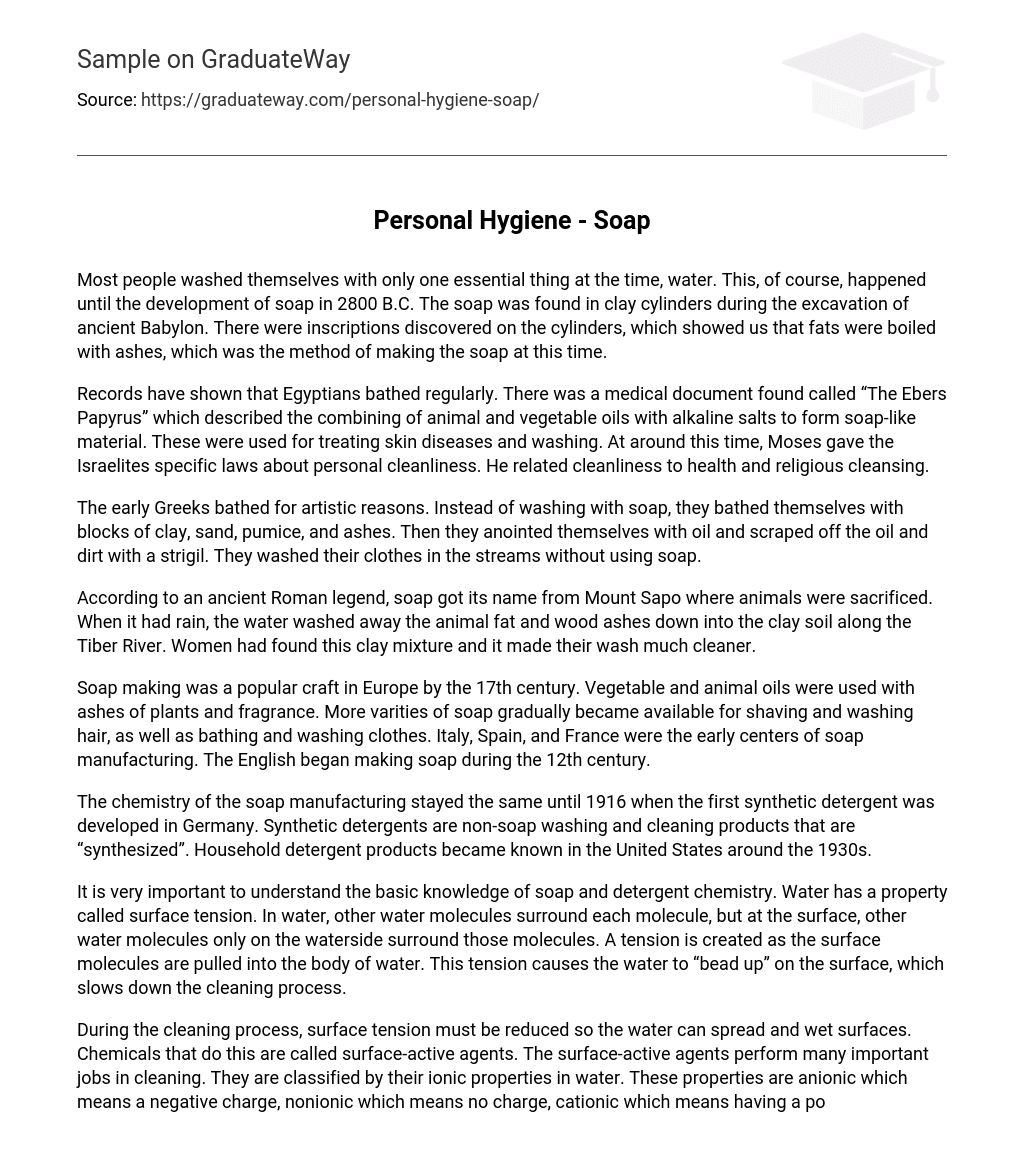Previously, most individuals relied on water as the sole means of washing themselves. However, the emergence of soap around 2800 B.C. brought about a significant change. The soap was uncovered within clay cylinders unearthed in ancient Babylon, with inscriptions revealing that fats were mixed with ashes to create this early form of soap.
It has been documented that Egyptians were regular bathers. An ancient medical document titled “The Ebers Papyrus” was discovered, outlining the use of a combination of animal and vegetable oils with alkaline salts to create a soap-like substance. These materials were utilized for treating skin ailments and for washing purposes. During the same era, Moses provided the Israelites with specific regulations regarding personal hygiene, emphasizing the connection between cleanliness, well-being, and religious purification.
Instead of using soap, the early Greeks washed themselves with blocks of clay, sand, pumice, and ashes for artistic reasons. They would then apply oil to their bodies and use a strigil to remove the oil and dirt. Additionally, they would wash their clothes in streams without the use of soap.
According to a legend from ancient Rome, soap earned its name from Mount Sapo, a place where animal sacrifices took place. Whenever it rained, the water would carry the fat and wood ashes from the sacrifices down into the clay soil by the Tiber River. Women discovered this clay mixture and realized that it significantly improved the cleanliness of their laundry.
By the 17th century, soap making had become a common craft in Europe. People used vegetable and animal oils along with plant ashes and fragrance to make soap. Over time, a wider range of soap options emerged, including those for shaving, washing hair, bathing, and doing laundry. Soap manufacturing first flourished in Italy, Spain, and France, with the English joining in during the 12th century.
The soap manufacturing process remained unchanged until 1916 when Germany developed the first synthetic detergent. Synthetic detergents are washing and cleaning products that are chemically created. Household detergent products gained popularity in the United States in the 1930s.
It is important to comprehend the chemistry of soap and detergent due to surface tension. In water, molecules surround each other except at the surface where only waterside molecules encircle them. As a result, there is tension as the surface molecules are pulled inward, causing water to form beads on the surface and making it difficult for cleaning.
The cleaning process includes the use of surface-active agents, known as chemicals, to decrease surface tension and enable water to spread and moisten surfaces. These agents have various functions in cleaning and are categorized according to their ionic properties in water: anionic (negative charge), nonionic (no charge), cationic (positive charge), and amphoteric (either positive or negative charge).
Soap is made by using water-soluble salts of fatty acids like sodium or potassium. The fats and oils used in soap production have a specific mixture of different triglycerides, each containing one glycerine molecule and three fatty acid molecules. Fatty acids, which are weak acids composed of a carboxylic acid group connected to a hydrocarbon chain, are the important components of fats and oils used in soap manufacturing.





